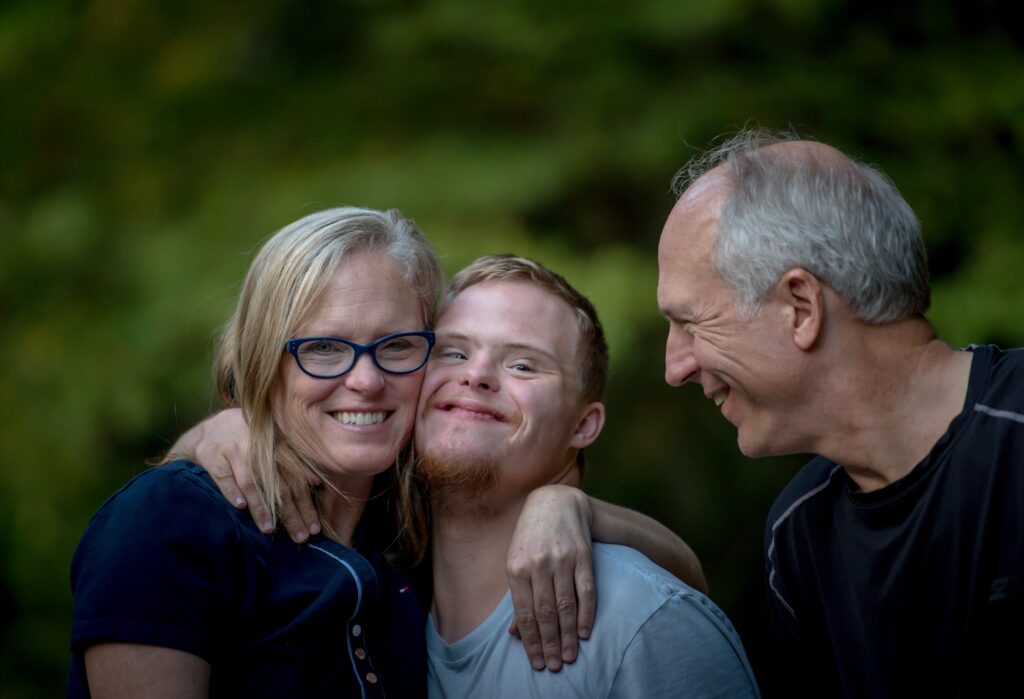
What is Down Syndrome?
Down syndrome is a genetic trait that changes the way the brain and body grow. It happens because of an extra copy of chromosome 21, which changes the usual way that people grow and mature. The condition affects about 1 in 700 kids born around the world. It can happen to people of any race or income level. Different children affected by this can have other physical traits and health issues.
What challenges do children face?
Kids with Down syndrome can develop language, social skills, and physical skills more slowly than other kids their age. They may need extra help and therapy to do so. They may also have to deal with rejection and social stigma, which can hurt their self-esteem and social growth.
Such children are also more likely to develop some health problems, like heart defects, hearing loss, and eye issues. Because of these problems, it can be challenging for kids with Down syndrome to get around in public, in shops, with other kids, and to behave in the right way.
Challenges Faced by their Parents
Parents of kids having the condition might feel shocked, sad, and worried about the future. They might also have to speak up for their child’s needs and teach others about it. There may also be money problems for the parents because medical bills and training costs can be costly. Also, they might have to figure out how to meet the needs of their child with Down syndrome as well as those of their other children and family members.
How Society Can Support the Children and Their Families
People, in general, can do a lot to help the children and their families. People with Down syndrome can feel more welcome in society in these ways:
- Education
- Help
- Raising awareness
Everyone with Down syndrome has some kind of learning problem, so they need extra help in school as they get older. To help their child grow and develop, parents may need to do things like speech therapy, physical therapy, and occupational therapy.
Parents of these kids also need social and organizational help to learn more about the condition and the problems that come with it. Social issues can be solved with the help of helpful communities and tools, like via specialized support groups and community events.
In the past, people with Down syndrome were kept away from regular people and put in hospitals or colonies. It took until the middle of the 20th century for parents, medical professionals, academics, and organizations that support people with Down syndrome to start changing how society perceived and treated people with Down syndrome and other disorders. As people with the disease have become more integrated into normal society, their situation has slowly gotten better. Many of them now go to regular schools with other kids.
Data Insights about Down syndrome
The Centers for Disease Control and Prevention (CDC) says that about 1 in 700 kids born in the US have Down syndrome. To sum up, Down syndrome is a complicated trait that has different effects on different people.
People with Down syndrome can expect to live a lot longer now than they did in 1960 and 2007. In 1960, the average life span for someone with Down syndrome was ten years. Most people with Down syndrome lived to be about 47 years old in 2007.
On the other hand, about 1 in 1,000 live babies in India are thought to have Down syndrome, and about 30,000 cases are reported each year on average. However, there isn’t a lot of information on how common the condition is in India because people don’t know about it or get medical help. Because of this, the actual cases might be even higher. (PharmEasy)
Conclusion
Overall, Down Syndrome is a complicated condition that has different effects on different people. There may be problems for both the children and their parents.
Society can do a lot to help children with this condition and their families by encouraging acceptance and making more people aware of the problems that people with is condition face. We can help make society more accepting and helpful for these kids and their families by learning more about it, supporting families, and spreading the word.


